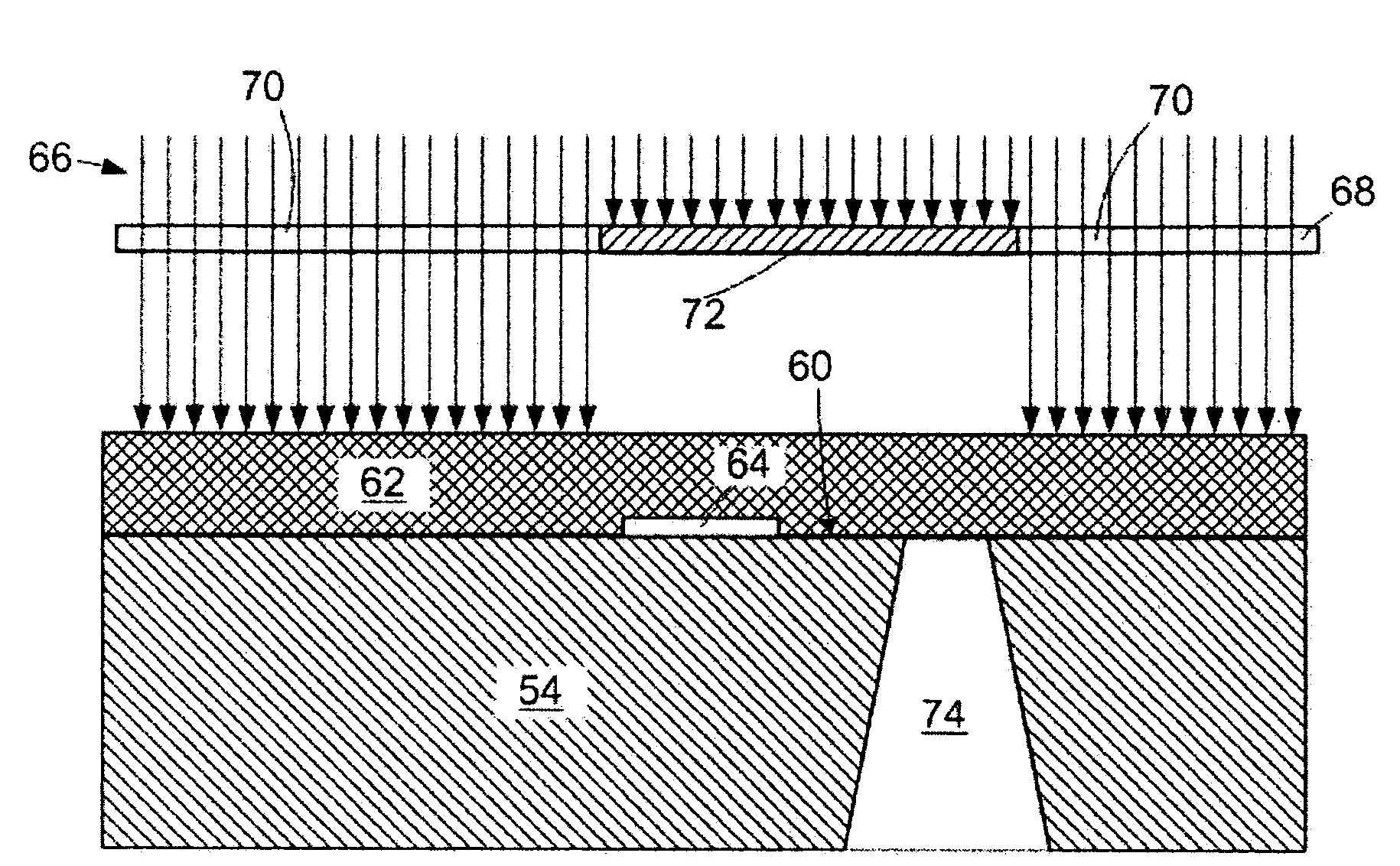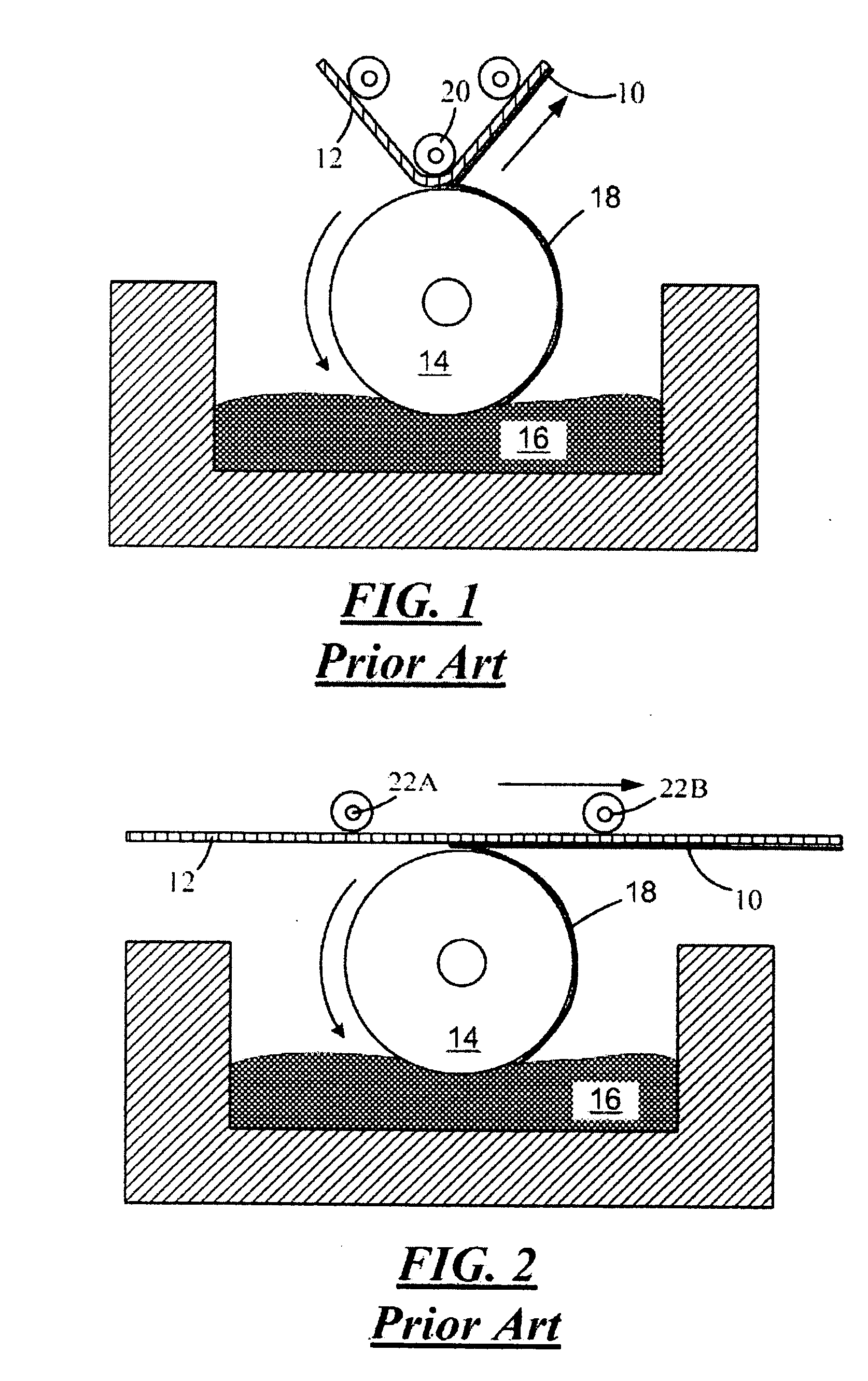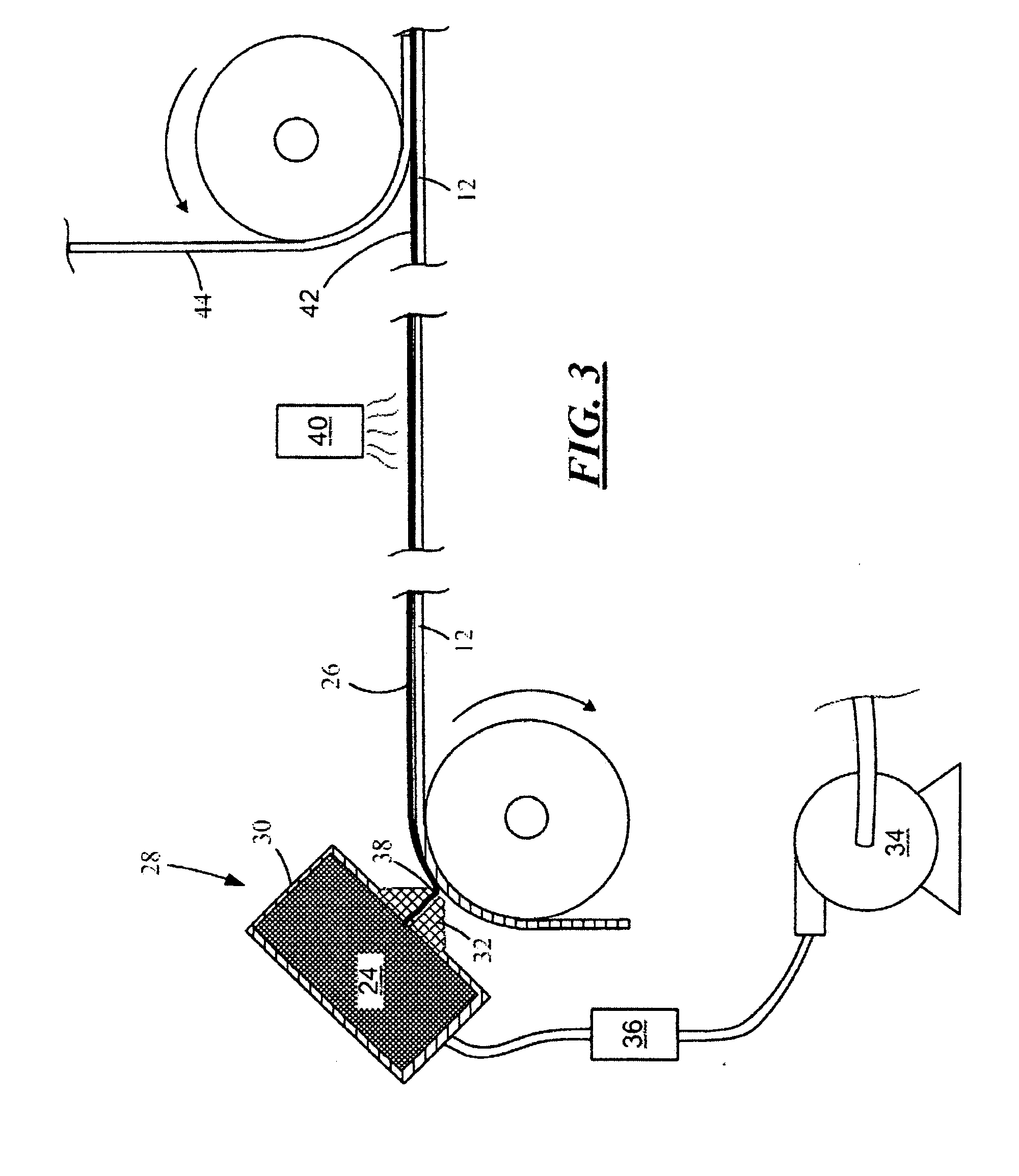Dry film protoresist for a micro-fluid ejection head and method therefor
a technology of microfluid ejection and protoresist, which is applied in the field of microfluid ejection head, can solve the problems of low yield of acceptable microfluid ejection head structure, and achieve the effect of uniform thickness and improved planarity of the coated layer
- Summary
- Abstract
- Description
- Claims
- Application Information
AI Technical Summary
Benefits of technology
Problems solved by technology
Method used
Image
Examples
Embodiment Construction
[0021]As set forth above, improved micro-fluid ejection heads may include nozzle members having a substantially uniform thickness that are substantially devoid of air bubbles, streaks, and / or grooves. Conventional processes used to provide dry film photoimageable layers include rotogravure techniques as illustrated in FIGS. 1 and 2. In a first prior art technique, a photoimageable layer 10 is applied to a moving web of backing material 12 using an elongate engraved roll 14 that rotates in a pool 16 of liquid photoresist material. As the roll 14 rotates, a thin film 18 of the photoresist material is captured in grooves on the roll and is applied to the moving web 12 that is kept in contact with the roll 14 by a back up roller 20. In FIG. 2, an off-roller gravure coating method is illustrated wherein two rollers 22A and 22B are offset from the roll 14 for maintaining the web 12 in contact with the grooved roll 14. In both FIGS. 1 and 2, the thin film 18 on the roll 14 is applied to th...
PUM
| Property | Measurement | Unit |
|---|---|---|
| thickness | aaaaa | aaaaa |
| thickness | aaaaa | aaaaa |
| thickness | aaaaa | aaaaa |
Abstract
Description
Claims
Application Information
 Login to View More
Login to View More - R&D
- Intellectual Property
- Life Sciences
- Materials
- Tech Scout
- Unparalleled Data Quality
- Higher Quality Content
- 60% Fewer Hallucinations
Browse by: Latest US Patents, China's latest patents, Technical Efficacy Thesaurus, Application Domain, Technology Topic, Popular Technical Reports.
© 2025 PatSnap. All rights reserved.Legal|Privacy policy|Modern Slavery Act Transparency Statement|Sitemap|About US| Contact US: help@patsnap.com



